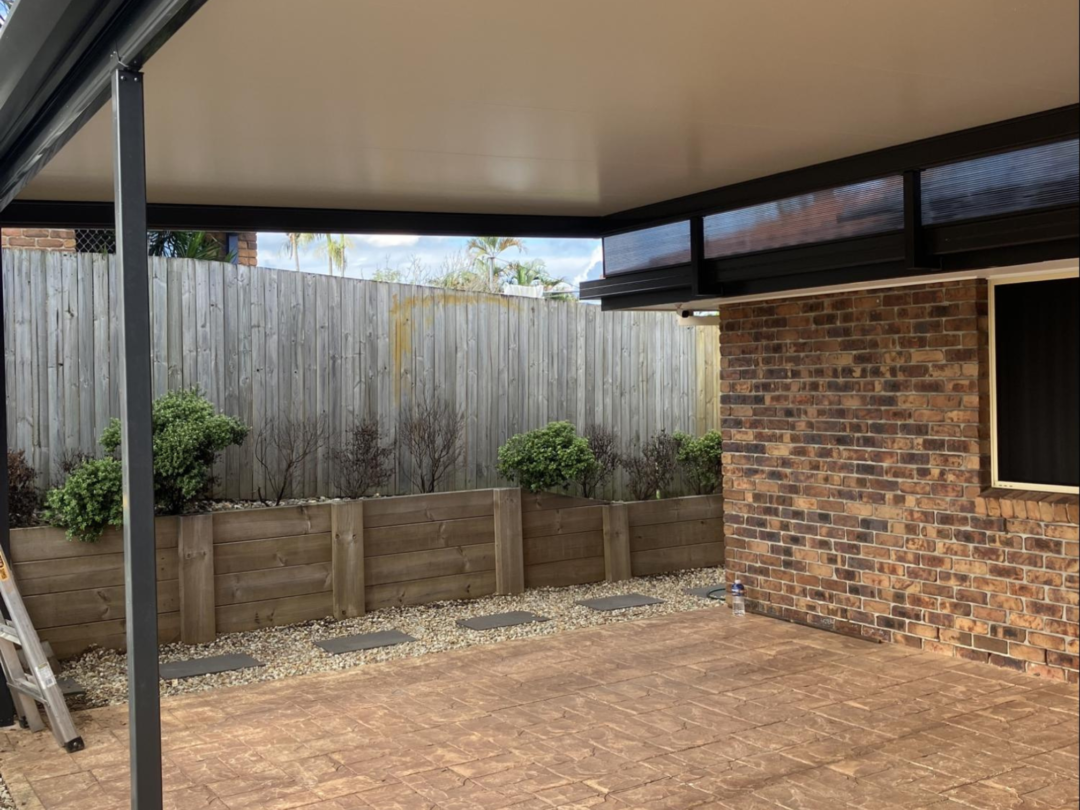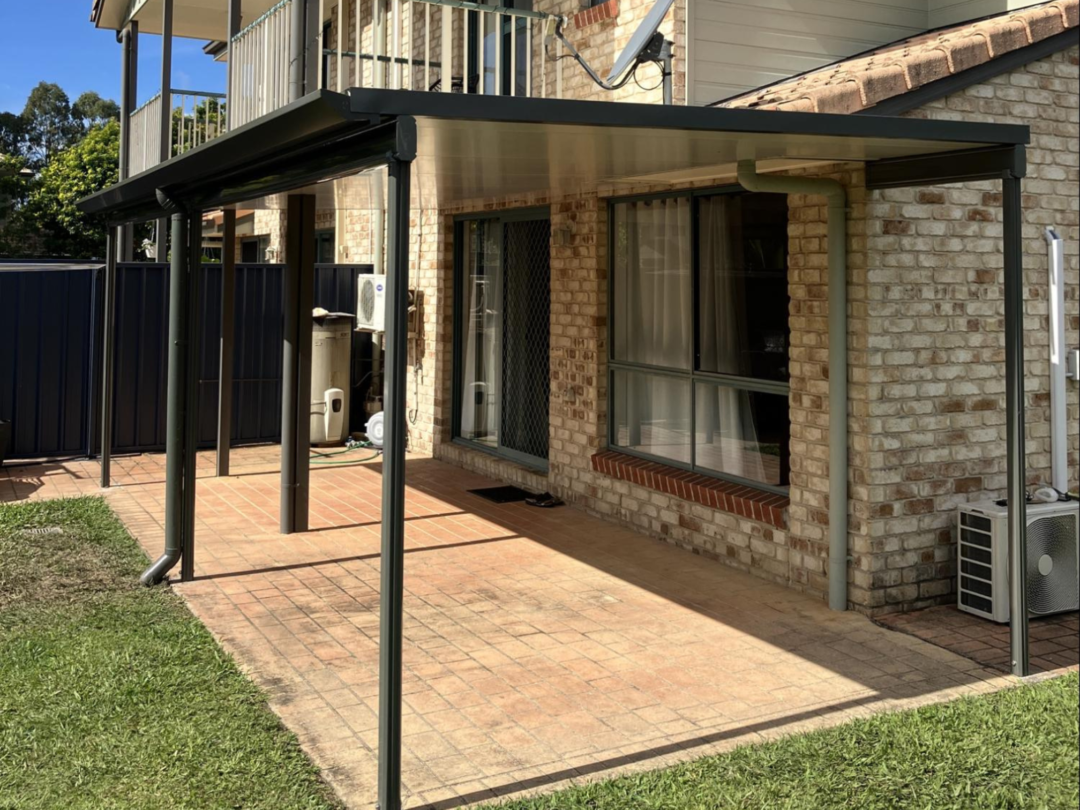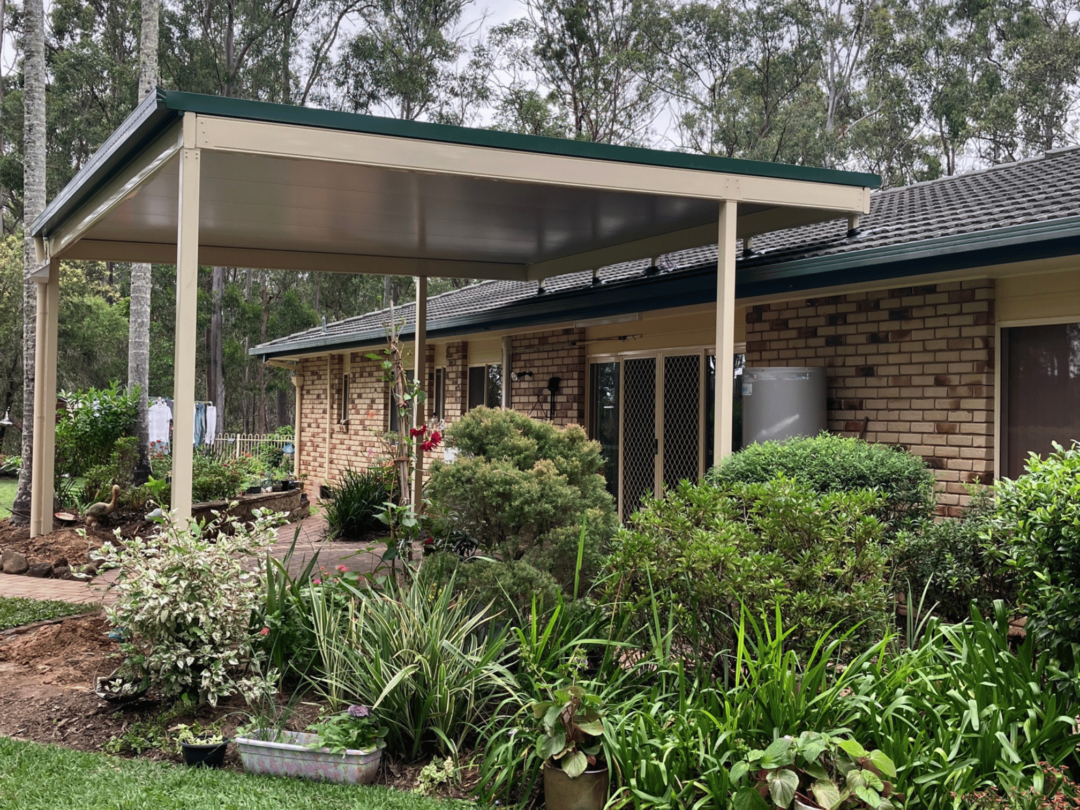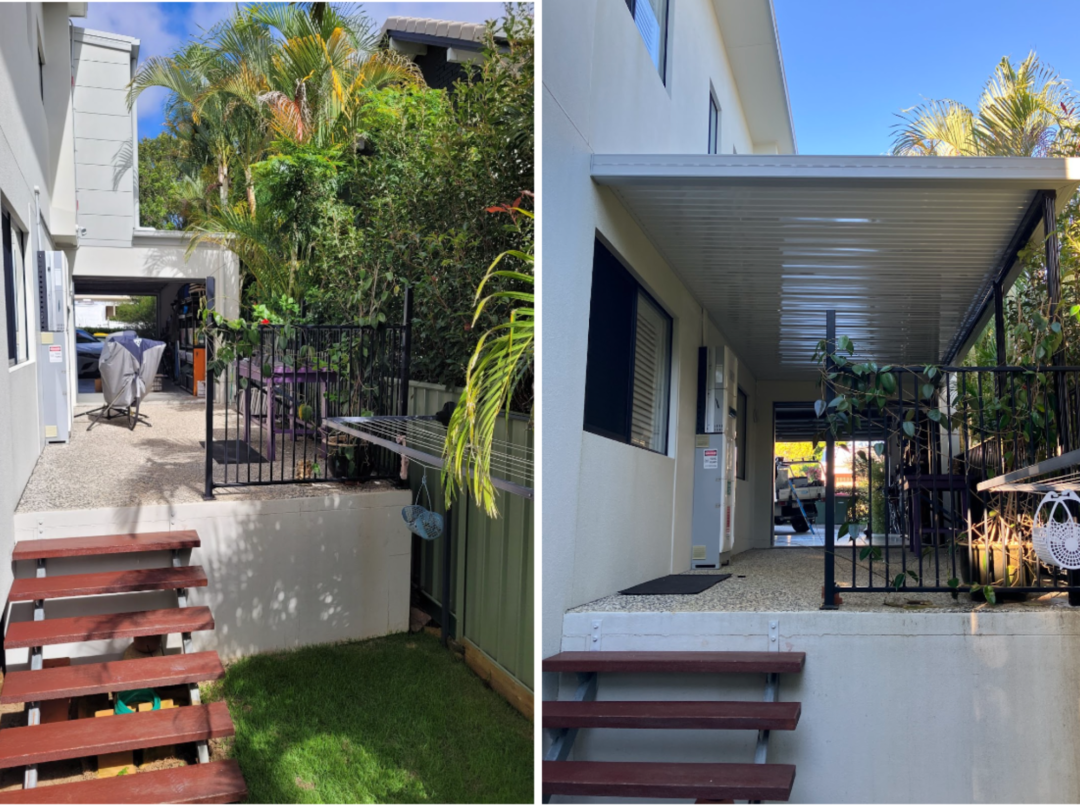Ever wanted to build a patio but worried you don’t have enough space to meet council regulations? With smaller blocks the norm, making the most of your outdoor area is a must. But how close can you build that patio to the fence line before the council comes knocking? When it comes to patios and alfresco areas in Queensland, there’s a magic number you need to know. This blog has the insider knowledge to help you maximise your patio plans without exceeding the legal 1.5-metre limit. We’ll walk through exactly what you can and can’t do when building a patio close to your boundary. Read on to learn how far you can legally build your patio to the fence and relax knowing your plans are above board.
How Far Can a Patio Legally Be Built From the Fence Line in QLD?
If you live in Queensland, the law states that any structure like a patio must be at least 1.5 metres (1500 millimetres) from your property’s side boundary. This includes patio roofs, posts and any other permanent features. However, your local council may approve a lesser distance if your neighbour provides written consent.
If you want to build out the front of your home, the general rule is to keep your structure 6m away from the road boundary. For corner lots, this 6-meter setback applies to any road boundary adjacent to your home, not solely the one in front of your house.
Neighbour consent
To build within 1.5 metres of the fence line, you’ll need approval from your neighbour in the form of a letter as well as further council approval. Get them to sign a statement saying they’re aware of and approve your plans to build closer to the boundary. Provide copies of your patio designs so they know exactly what will be built and how close it will be. With consent, some councils may allow patios to be as close as 600mm to the fence.
Exceptions
In some cases, you may be allowed to build closer than 1.5 metres even without consent. This includes if your patio will be less than 2 metres high, the fence is made of solid material like brick, or if the structure won’t impact access to utilities. You’ll still need council approval, so check with them first. They may require amendments to your plans to comply with regulations.
Setback requirements
The minimum setback depends on your local government area. Some specify 1 metre, others 2 metres or more. Setbacks apply to any permanent feature of the patio, like roofs, posts or stairs. Open patios without a roof generally have more flexibility, but always double-check with your council. They have the final say on how far any structure can be from boundaries in your area.
With the right approvals and by following your council’s setback rules, you can build a patio close to your fence line. But for the easiest, hassle-free option, aim for at least 1.5 metres between the patio and boundary. That way you’ll avoid complications and ensure your patio is well within legal limits.
Understanding the Regulations on Patio to Fenceline Distance
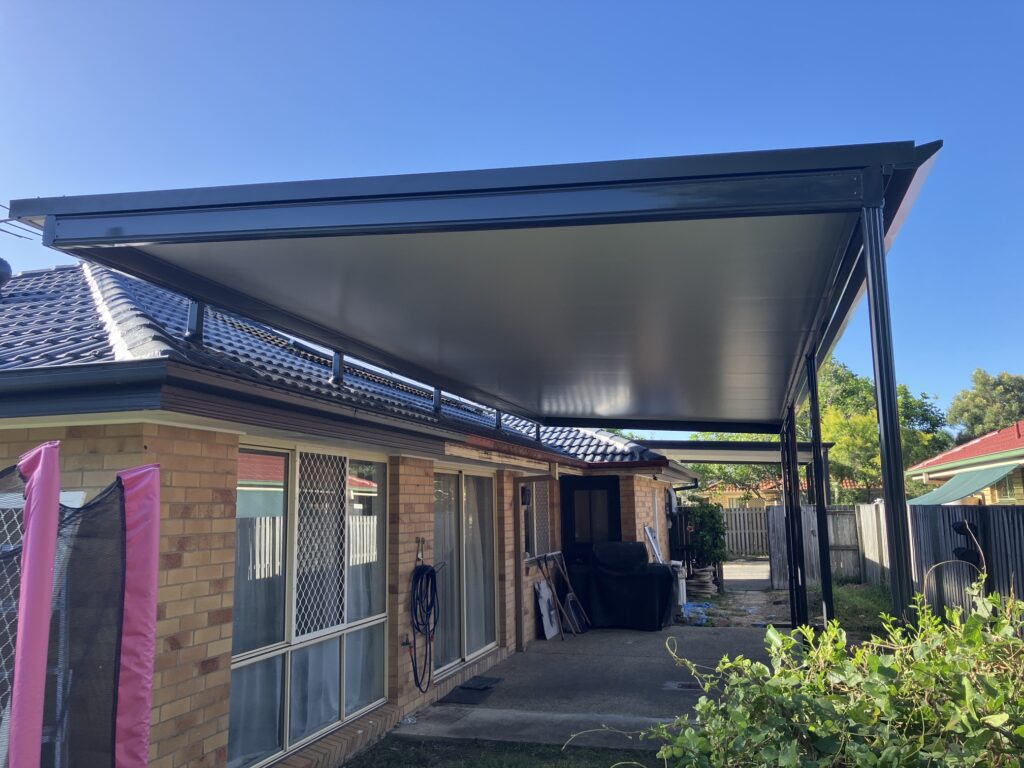
When building a patio in Queensland, you need to follow the regulations set by your local council regarding the minimum distance it needs to be from your property boundary and fence line. Typically, patios need to be at least 1.5 metres away from the fence to meet safety and access requirements.
Allowing Access
Having adequate space between your patio and the fence ensures there is enough room for access to maintain both structures. Most councils require a minimum of 900mm of clear access space. For larger patio structures, more space may be needed. It’s best to check with your council for the specific requirements in your area.
Fire Safety
Another reason for separating patios and fences is fire safety. By keeping them at a distance, there is less chance of a fire spreading rapidly from one structure to another. The open space also allows access for emergency responders in the event of a fire. For the safety of you, your family and your property, be sure to build your patio a safe distance from fences and overhanging trees.
Privacy and Reduced Noise
An added benefit of having space between your patio and the neighbouring fence is increased privacy and less noise transfer. Sitting right next to the fence means your conversations and activities can be overheard, and you’ll hear your neighbours as well. By building your patio further away, you’ll enjoy more peace and quiet in your own outdoor living space.
With the right permits and knowledge of your local council’s requirements, you can design a patio oasis in your yard that meets regulations and your lifestyle needs. Understanding the rules around patio-to-fence distance will ensure your project goes smoothly and you end up with a space that is functional, safe and enjoyable for years to come.
How to Measure Your Allowable Patio Size and Layout

Now that you know the rules around patio covers and fences, it’s time to measure your yard so you can design a patio that complies with regulations.
Measure from the corners of your fence line into your yard at several points to determine the average distance. The minimum allowed is usually 1.5 metres, but many properties provide even more space. If your measurements are close to the minimum, you’ll need to account for this in your patio design by placing posts and the edge of the roof at least 1.5 metres from the fence.
Consider the size of your yard and how much space you want to devote to a patio. While you may be able to build a large patio, a smaller space may suit your needs and leave more open yard. Think about how you intend to use the patio to determine an appropriate size. A space for a small table and chairs will require less area than an entertainment space.
Determine the best shape for your patio based on your yard’s dimensions and features. A simple square or rectangular shape often works well for smaller yards. An L-shape can provide separate areas for dining and lounging. For larger, irregularly shaped yards, a custom shape may maximise your space. Consider how different shapes will impact your access to and use of the rest of the yard.
Sketch your layout to scale on graph paper. This allows you to experiment with different shapes and sizes to find what works best before you start construction. Include measurements for key elements like posts, roof overhangs, and setbacks from the fence and other property lines. Think about how rainwater will flow off the roof to ensure proper drainage.
A well-designed patio can become an extension of your home and a space for relaxation or entertainment. By understanding the rules around patio covers and taking the time to measure and design the right space for your needs, you’ll end up with a patio that you can enjoy for years to come.
Design Ideas to Maximise Your Outdoor Space
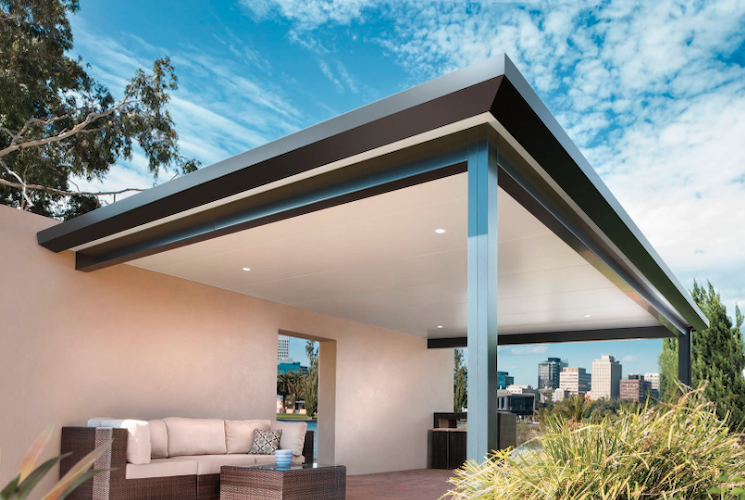
Ever wondered how you can make the most of a small patio space? There are a few design tricks you can use to create an illusion of more space without exceeding council regulations.
Choose light, bright colours
Light colours like off-white, beige and light grey make a space appear more open and airy. Paint your patio walls and roof in a light shade or opt for a neutral coloured concrete floor. Bright accent colours will also make your patio pop.
Keep patio furniture minimal
Stick to a few essential pieces of weather-resistant furniture like a small table and 2-4 chairs. Folding or stackable chairs are ideal for small spaces. Avoid bulky furniture, especially overstuffed pieces that will make the area feel cramped.
Use multifunctional furniture
Furniture that serves more than one purpose, like a storage ottoman or bench with hidden compartments underneath, is perfect for maximising space. Look for pieces with built-in storage for patio accessories, seat cushions and more.
Add decorative mirrors
Strategically placed mirrors reflect light and give the illusion of more space. Hang mirrors on patio walls or add a large floor mirror. Just be mindful of the 1.5m clearance needed between the patio roof and fence line.
Keep the floor plan open
An open-concept floor plan makes a small patio feel more spacious. Avoid sectioning off different areas with potted plants, trellises or half walls. Remove any non-structural barriers to open up sightlines and create flow.
By choosing a light colour scheme, minimising furniture, using multifunctional pieces, adding mirrors and keeping an open floor plan, you can make a small patio space feel more spacious without exceeding council regulations. These design tricks will maximise your outdoor living area so you can enjoy it to the fullest.
Large, open doors that lead to the patio area can also assist in making your patio space feel larger than it is by merging interior and exterior zones.
FAQs: Common Questions on Building a Patio Close to the Fence
How close can my patio be to the fence line?
In Queensland, the recommended distance between a patio and the fence line is 1.5 metres to allow for proper drainage and ventilation. However, patios that attach directly to a house wall are permitted to extend up to the boundary line under certain conditions, such as when the patio has a skillion or flat roof and is not enclosed. Check with your local council for specifics on their regulations.
How close can my patio be to the road setback?
In QLD the general rule is to keep structures 6 metres away from all road boundary setbacks. If you plan to encroach on that boundary, further permissions from your local council will be required.
Do I need council approval for a patio?
For a basic uncovered patio, approval may not be needed if it meets certain requirements, such as being less than 10 square metres in size, not attached to a heritage property, and not in a bushfire prone area. However, it is best to double check with your council first before starting any construction, as their rules may differ. Approval will likely be needed for patios over 10 square metres or those with a roof. The approval process typically involves submitting detailed plans for review to ensure the patio meets building codes and zoning laws.
What are the main factors that determine if I need approval?
The three primary factors that determine if council approval is required for a patio are:
- Size of the patio: Larger patios, especially those over 10 square metres, typically need approval.
- Location of the patio: Patios in bushfire zones, flood zones, or heritage areas usually require approval.
- Structure of the patio: Patios with a roof, whether solid or open, normally need council approval. Open-frame patios may be exempt.
How long does the approval process take?
The time required for approval of patio plans can vary significantly between councils. On average, you can expect the process to take between 4 to 8 weeks. More complex proposals, or those in sensitive areas, may take 3 months or more. It is best to submit your application as early as possible to avoid delays in starting construction. Check with your local council for their typical processing times so you can plan accordingly.





